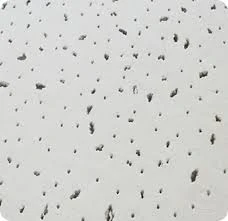8 月 . 13, 2024 09:44 Back to list
Understanding the Importance and Benefits of Suspended Ceiling Access Panels in Modern Construction
Understanding Suspended Ceiling Access Panels
Suspended ceiling access panels are essential components in modern architectural design, particularly in commercial buildings and offices. They serve a dual purpose providing unobtrusive access to the space above the ceiling while maintaining the aesthetic appeal of the interiors. This article delves into the significance, types, installation processes, and benefits of suspended ceiling access panels.
Significance of Access Panels
In many commercial and industrial settings, the area above the suspended ceiling is crucial for housing various utilities, such as electrical wiring, plumbing, and HVAC systems. Access panels facilitate maintenance and inspection of this often-hidden space without the need for extensive renovation or disruption to the office environment. This accessibility can be vital in ensuring that sustained operations run smoothly and efficiently.
Types of Suspended Ceiling Access Panels
Suspended ceiling access panels come in a variety of designs and materials to cater to different needs. Here are some of the common types
1. Hinge Access Panels These panels are designed with hinges, allowing them to swing open easily. They are ideal for frequent access points and can be locked for security.
2. Tile Access Panels These panels mimic the standard ceiling tiles and are used primarily for aesthetic purposes. They can be seamlessly integrated into the ceiling design, making them almost invisible.
3. Fire-Rated Access Panels In environments where fire safety is a priority, fire-rated access panels are essential. They are designed to prevent the spread of fire in the event of an emergency and comply with building codes.
4. Acoustic Access Panels These are crafted to absorb sound and are particularly useful in settings where noise reduction is a concern, such as conference rooms or auditoriums.
5. Plastic Access Panels Lightweight and often used in residential settings, plastic access panels are durable and resistant to corrosion.
Installation Process
Installing suspended ceiling access panels requires careful planning and execution to ensure proper function and aesthetic integration. Here’s a general step-by-step guide for installation
suspended ceiling access panels

1. Planning and Measurement Determine the most strategic locations for the access panels. It’s essential to measure and mark the locations accurately on the existing ceiling grid.
2. Cutting the Ceiling Using a suitable cutting tool, carefully cut out the marked sections of the ceiling grid to create openings for the access panels.
3. Installing the Frame If applicable, install a frame that will support the access panel. This frame ensures structural integrity and helps the panel to fit securely.
4. Fitting the Panel Insert the access panel into the prepared opening. Ensure that it sits evenly and securely within the ceiling grid.
5. Finishing Touches If necessary, paint or texture the panel to match the surrounding ceiling for a seamless look.
Benefits of Suspended Ceiling Access Panels
The advantages of using suspended ceiling access panels extend beyond mere functionality. They contribute positively to building design in several ways
- Aesthetic Integration Access panels can be designed to blend in with the overall ceiling design, which helps maintain a cohesive look in a room.
- Cost-Effectiveness By simplifying maintenance and access, these panels can reduce labor costs associated with ceiling repairs and inspections.
- Enhanced Safety With dedicated access points, maintenance personnel can safely work in the ceiling space without risking damage to the surrounding structure.
- Energy Efficiency Proper access to insulation and HVAC systems above the ceiling can lead to improved energy efficiency, which is a significant concern for many businesses today.
In conclusion, suspended ceiling access panels are vital for any modern building infrastructure. They provide essential access, maintain aesthetic values, and ensure safety and efficiency in maintenance operations. Investing in high-quality access panels can save time, money, and resources in the long run.
-
Revolutionizing Interior Design with Ceilings t grid Suspended SystemNewsOct.29,2024
-
Revolutionizing Ceiling Design with ceiling access panel with Gypsum Tile WaterproofNewsOct.29,2024
-
Revolutionizing Interior Design with PVC Gypsum Ceiling: A Comprehensive GuideNewsOct.29,2024
-
Elevating Interior Design with High quality Mineral Fiber Ceiling TilesNewsOct.29,2024
-
Revolutionizing Interior Design with PVC Gypsum Ceiling: A Comprehensive GuideNewsOct.29,2024
-
Elevating Interior Design with High-Quality Mineral Fiber Ceiling Tiles: A Comprehensive GuideNewsOct.29,2024







